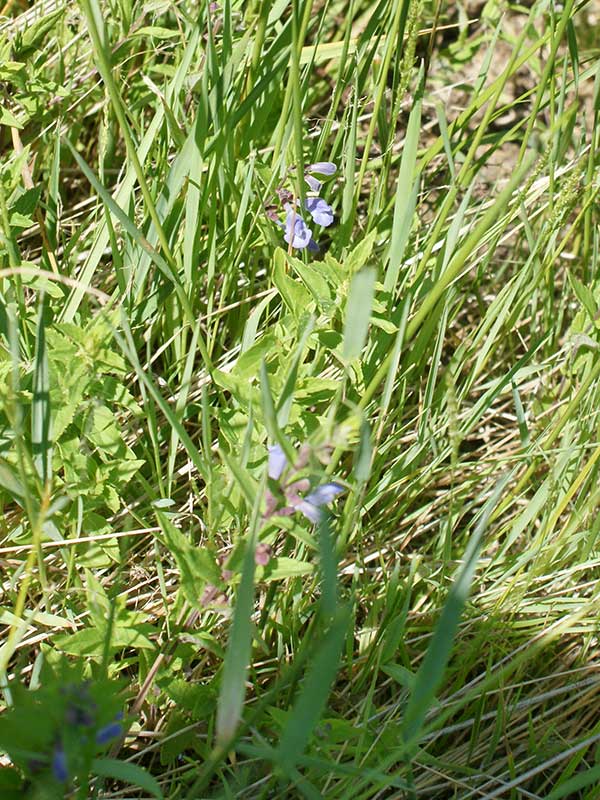Scutellaria galericulata / marsh skullcap
- riparian zones and wetlands
- blue, trumpet shaped (legume) flowers; usually in pairs on same side of a stem
- flowers not at the top of the stems
- square stems, widely spaced opposite leaves; adjacent pairs at right angles
Also known as: common skullcap, hooded skullcap
Synonym: Scutellaria epilobiifolia
Marsh skullcap is a pretty common species of wetlands and riparian zones – they say – but it’s not always apparent. As seen in one of the gallery photos, it tends to get buried in the noise of all the other plants there.
Since it’s a legume, the stems are square and the leaves are opposite. Adjacent pairs of leaves are widely spaced and at right angles to each other. Back to the leaves in a minute, but the blue flowers of the marsh skullcap are produced in pairs – although sometimes singly – in the axils (armpits) of middle to upper leaves, but at right angles to the leaves at that node. Both flowers are on the same side of the stem. Usually, there are only a few pairs of flowers in bloom at any one time.
Marsh skullcap flowers are of an irregular trumpet shape, less than an inch long. The petals are blue-violet and have a broad, wavy lower lip. Usually, this is bumpy, and patterned with blue dots against a white throat although that is either absent or difficult to see in the gallery photos. The 3 upper lobes fold together forming a rounded hood (or skull cap) over the mouth of the tube. The outside of the corolla has a dense covering of short hairs.
Marsh skullcap blooms over a couple month period from mid- to late summer. Afterwards, each flower is replaced by a small capsule containing up to 4 nutlets which are eventually ejected when the capsule splits open.
The leaves are up to 2 inches long, and ¾ inch wide. More lanceolate than oval, and toothed with rounded or blunt pointed teeth. The veins are conspicuously indented. There are at most very short petioles. The leaves are on stems and branches that are erect, but weak, often supported by surrounding vegetation. That vegetation also determines how tall the plants can grow, but perhaps to 3 feet.
The root system is fibrous and stoloniferous. Thus, individual plants often form small clonal populations.
Interesting bits – Marsh Skullcap has fairly showy flowers but it not the only skullcap. It can be distinguished from other Scutellaria spp. by the fact that (1) only solitary axillary flowers are produced, rather than terminal racemes of flowers,( 2) the flowers are longer than ½ inch, (3) the leaves are fairly narrow in shape, and 4) it is found in wetlands, rather than drier areas of woodlands and prairies. For example, another skullcap found in the same habitat is Scutellaria lateriflora. It differs from the marsh skullcap in that the flowers are in terminal racemes, and that they are about half the size of these.
| Color | |
|---|---|
| Family | |
| Blossom size | |
| Inflorescence size | |
| Inflorescence type | |
| When? | |
| Where? | fens, riparian, seeps, stream banks, wet(ter) meadows, wetlands |


